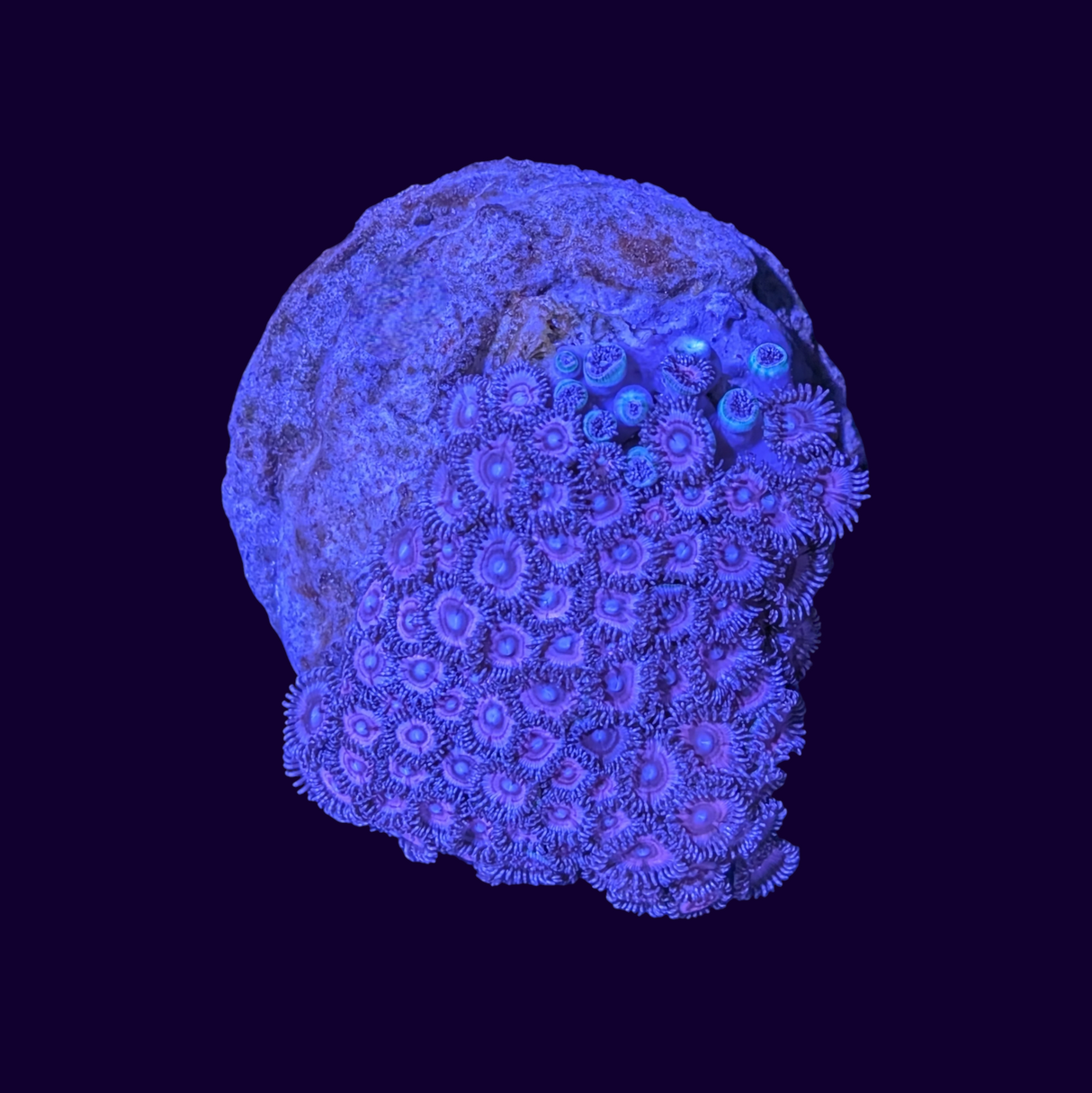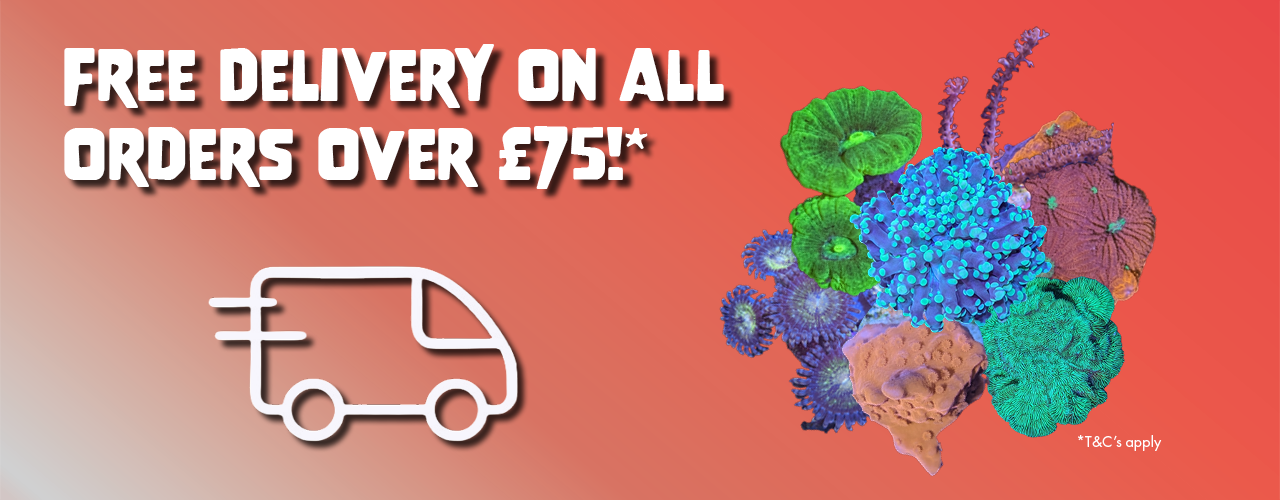Zoa Colony - Collection Only
Zoa Colony - Collection Only is backordered and will ship as soon as it is back in stock.
Couldn't load pickup availability
Description
Description
Type: Zoa
Name:
Size: Large Mini Colony
Fixing: rock
NOTE: Zoas contain palytoxin so take care when handling these corals
Coral Care Guide: Zoa Colony Coral
Overview
Zoa Colony Coral (Zoanthids) is a vibrant and hardy coral species perfect for beginner and experienced reef tank enthusiasts. Known for their striking color patterns and adaptability, these corals add dynamic beauty to any aquarium. They are a favorite among hobbyists due to their ease of care and the variety of colors available.
Care Requirements
1. Water Parameters
Maintaining stable water parameters is essential for the health and growth of Zoa Colony Coral. Here are the ideal ranges:
- Temperature: 74-82°F (23-28°C)
- pH: 8.1-8.4
- Salinity: 1.024-1.026 (specific gravity)
- Alkalinity: 8-12 dKH
- Nitrates: <10 ppm
- Phosphates: <0.03 ppm
2. Lighting
Zoa corals thrive under moderate lighting conditions. Too much light can cause stress, while too little may hinder growth.
- Preferred Lighting: Moderate to high (PAR range: 100-250)
- Type of Light: LED, T5, or Metal Halide
Tip: Gradually acclimate your Zoa coral to new lighting to avoid "light shock."
3. Water Flow
-
Flow Type: Moderate to strong, with variable patterns.
Zoanthids prefer steady but not overpowering water movement. This helps keep them clean and promotes optimal health.
4. Placement
- Zoa Colony Coral can adapt to various placements, but ensure they receive adequate light and flow.
- Best Placement: Mid to lower sections of the tank.
Tip: Monitor for potential shading from other corals or rock structures.
Feeding
Zoa corals primarily rely on photosynthesis through their symbiotic zooxanthellae algae. However, occasional feeding can enhance their growth and coloration.
-
Food Types:
- Phytoplankton
- Rotifers
- Coral-targeted foods (e.g., Reef Roids)
-
Feeding Frequency: Once or twice weekly.
Maintenance
1. Pest Control:
Zoanthids can sometimes attract pests such as nudibranchs or aiptasia. Regular inspections and quarantining new additions are crucial.
2. Cleaning:
Occasionally use a gentle turkey baster to remove debris or detritus from the polyps.
3. Fragging:
Zoa colonies can grow rapidly and may require periodic trimming or "fragging" to prevent overcrowding.
Compatibility
Zoa Colony Coral is generally peaceful and mixes well with other coral species. Be mindful of space to prevent encroachment by aggressive neighbors.
Special Notes
- Safety: Zoa corals produce palytoxin, a highly toxic substance. Always handle with gloves and wash hands thoroughly after contact. Avoid inhaling vapors from fragging or other activities.
- Signs of Stress: Monitor for signs like closed polyps, discoloration, or algae overgrowth. Address water parameters or lighting if needed.
Conclusion
With their vibrant colors, resilience, and straightforward care requirements, Zoa Colony Corals are an excellent choice for reef tanks of all sizes. By providing stable conditions and regular care, you’ll enjoy a thriving, colorful colony for years to come.
Shop our collection of Zoa Colony Corals and other reef tank essentials today!
Payment & Security
Payment methods
Your payment information is processed securely. We do not store credit card details nor have access to your credit card information.





